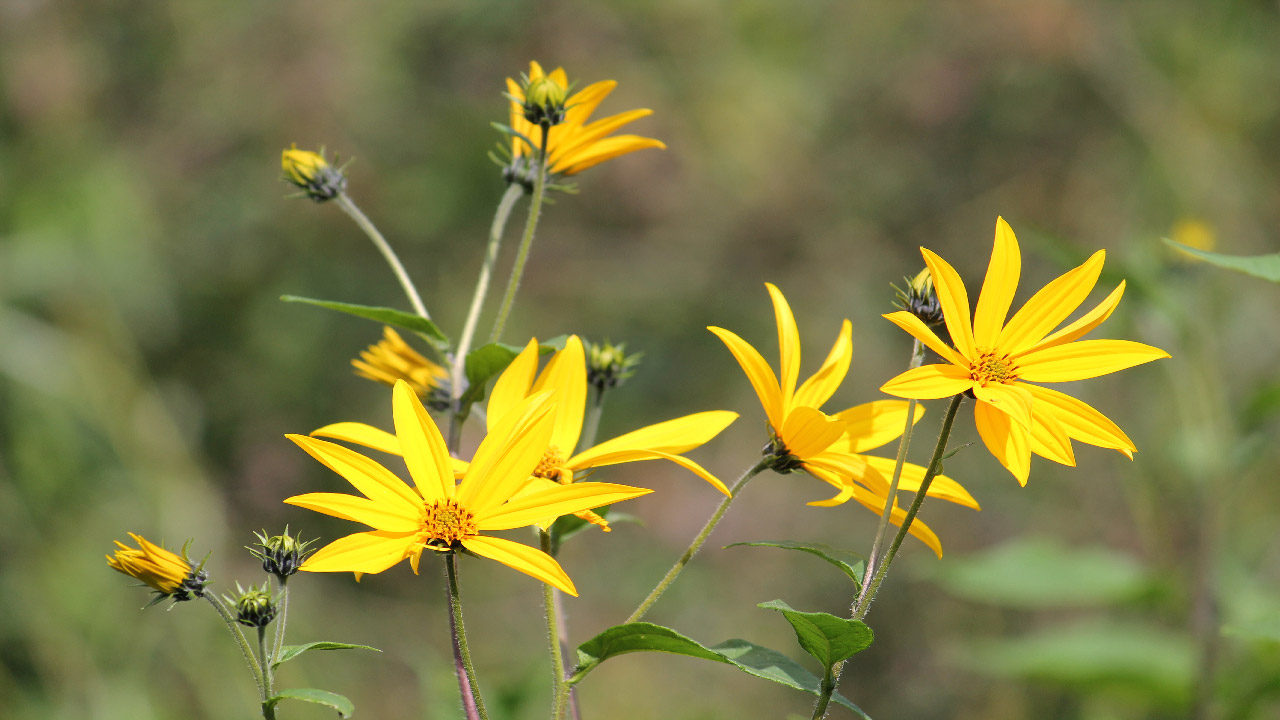Everything You Wanted to Know About Jerusalem Artichoke
Oct 10th 2024
Helianthus tuberosus, also called sunroot, sunchoke, wild sunflower, topinambur or earth apple. Jerusalem artichoke is native to North America and Canada, growing wild in most areas.
This plant is also called an earth pear since its tubers resemble this fruit in shape. Let's learn what a Jerusalem artichoke is, what it looks like, and how useful it is.
About Jerusalem Artichoke
The first people to cultivate and eat Jerusalem artichoke were the Native Americans. A French explorer, Samuel de Champlain, brought it back to France, where it became popular. The Jerusalem artichokes are sunflower members and have a sweet, nutty flavor.
The shape of Jerusalem artichoke tubers depends on the variety: they can be uneven, resembling ginger, and can be smooth. The taste of the root vegetable resembles a cabbage stalk or radishes. If you fry it, it looks like a sweet potato.
Growing Jerusalem Artichoke
Jerusalem artichokes are easy to grow and are a good choice for beginners. The plant grows beautiful and tall, reaching heights of six to nine feet tall. Its large yellow flowers are visible from afar. Jerusalem artichoke blooms in August-September, but its tubers are best harvested in the fall.
To grow these plants, follow these steps:
- When to plant: Early Spring or late winter
- Where to plant: These plants need full sun with well-drained, alkaline soil.
- How to plant: The tubers should be planted 3 to 5 deep and 15 to 24 inches apart.
- Plant care: Water well after planting and regularly throughout the growing season. Feed with balanced fertilizer or compost.
Watering Jerusalem Artichokes
The Jerusalem artichokes can tolerate some drought, but they prefer moisture. Use a drip irrigation system to keep your soil moist. Water the soil regularly during dry weather to support tuber development. Add a layer of mulch to retain soil moisture. Avoid waterlogging, although they like moisture, ensure the soil has good drainage to prevent root rot.
Storing Jerusalem Artichokes
Jerusalem artichokes can be stored as follows:
- In a cool, dark place such as a cellar or root cellar.
- The ideal storage temperature is 32 to 40 degrees Fahrenheit with high humidity.
- Before storing, brush off any excess soil and allow the tubers to air dry for a few hours.
- Do not wash them, as excess moisture can cause them to spoil more quickly.
- They can be kept in a cool, dark, and well-ventilated place for short-term storage.
- Avoid storing them near fruits that release ethylene gas, which could cause sprouting and deterioration.
To store the crop, the earthen pear is treated like potatoes. The tubers are dug up for the winter and stored in the cellar. However, unlike potatoes, they can also be left in the ground since Jerusalem artichoke is not afraid of frosts, and in the spring, you can get a naturally preserved root crop.
What is the value of Jerusalem artichoke
The tubers contain a unique complex of carbohydrates, even more than sugar cane and beets.
Therefore, this plant is especially valuable for people with type 2 diabetes mellitus. Due to its high content of dietary fiber, Jerusalem artichoke helps to reduce blood sugar levels and strengthens the walls of blood vessels, the integrity of which is often violated in diabetes. Inulin prevents the rapid absorption of sugars, which slows down the level of glucose in the blood.
Jerusalem artichoke tubers also contain essential amino acids, organic acids, B vitamins, minerals such as silicon, zinc, magnesium potassium – there are more of these minerals in Jerusalem artichoke than in other root crops.
The use of Jerusalem artichoke activates the metabolism of fats and carbohydrates, normalizes the absorption of insulin and ultimately promotes weight loss. In addition, this root vegetable relieves hunger for a long time.
How to Use the Jerusalem Artichoke?
This versatile root vegetable can be enjoyed fresh or baked. The possibilities are endless, but one of the best ways to enjoy the Jerusalem artichoke is in a salad. It can be made with carrots, radishes, apples, quince, and fresh herbs. The tubers should be chopped or grated, and lemon juice should be used to avoid browning. The salad is seasoned with vegetable oil and garlic, or any spices are added to taste.
Conclusion
The Jerusalem artichoke, with its unique flavor and versatile uses, is more than just a delicious addition to your meals; it's a hardy and resilient plant that thrives in diverse conditions. As you delve into the world of gardening and expand your culinary horizons, we encourage you to experiment with new plants. The joy of growing your own food not only connects you with nature but also brings the satisfaction of discovering new flavors and nutrients.
Consider adding the Jerusalem artichoke to your garden this season! With proper care, including quality drip irrigation and reliable tools from DripWorks, you'll set yourself up for a bountiful harvest. Embrace the adventure of gardening and enjoy the rewards of your efforts on your plate!

